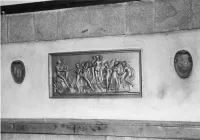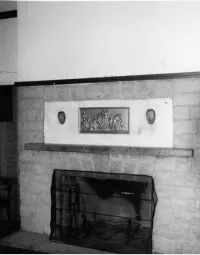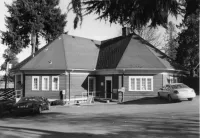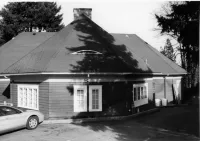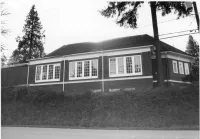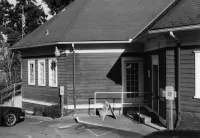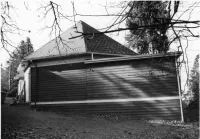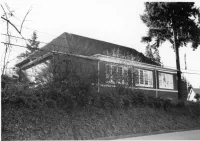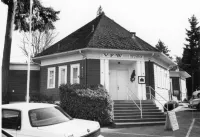Share what you know,
and discover more.
Share what you know,
and discover more.
Aug 24, 2005
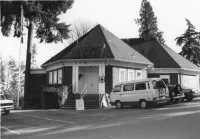
-

- Charmaine Bantugan
National Register of Historic Places - Keewaydin Clubhouse (Mercer Island VFW Post #5760)
Statement of Significant: The Keewaydin Clubhouse is eligible for the National Register of Historic Places under criterion "A" as a resource that represents the pervasive influence of community clubs and civic organizations in early 20th Century America. The Clubhouse is also historically significant under criterion "C" as a building that embodies the distinctive characteristics of early 20th Century community clubhouses as a building type. Completed in 1922, the Keewaydin Clubhouse (later the Mercer Island Community Club) served as a community meeting place for the residents of Mercer Island, Washington until the early 1960s. In 1966, it was purchased by the Veterans of Foreign Wars (VFW) Post 5760 in whose ownership it remains today. The Keewaydin Club was organized on November 29, 1921 by members of the Mercer Island Community Club. The club combined all of the Island's north end improvement clubs. As a new organization, the following officers were elected to serve one-year terms: W.S. Foster (president), H.C. Raymer (vice-president), C.H. Cole (secretary), Dr. L.E.A. Hooey (treasurer) with trustees G.A. Abramson, N.V. Berglind and H.H. Riley. Early promotional material for the club denotes that: "The Keewaydin Club was formed for social purposes exclusively. It is meant to serve as a medium for cementing the friendly relationship of the members, fostering a spirit of neighborliness, elevating the social life of the community and furnishing an adequate place in which to congregate when the need presents itself." Based on that premise, club members began planning immediately for a building devoted strictly to social purposes. In May of the following year a lot was purchased and cleared, concrete was poured, and on a single day, July 1, approximately 60,000 feet of lumber and 58,000 shingles were hauled up the steep slope from the barge that had brought the cargo from Seattle. The Clubhouse was completed in 1922 using volunteer labor by a variety of club members. Seattle architect Ernest R. Williams, who was a member of the club, designed the restrained Colonial Revival building. To date little information has been found regarding the formal training or background of Ernest R. Williams. The Keewaydin Clubhouse is the only verified building designed by him. The earliest reference to Williams is the 1910 Seattle Polk. Directory where he is listed as a draftsman for the prominent Seattle architectural firm of Graham & Myers. By 1914 Williams apparently left the firm and is listed as a draftsman with the South Seattle School District No. 1. Two years later in 1916, Ernest and his wife Kate had moved to Mercer Island (exact location unknown). Upon moving to the Island, Ernest took on another new job as a draftsman for architect J. R. Nevins, whose offices were located in the Hoge Building in downtown Seattle. Polk directories note that Williams was employed by Nevins from 1917 until at least 1924. Ernest R. Williams died in March 1933 at the age of 45. Williams designed the Clubhouse in the Colonial Revival vein and took full advantage of the triangular shaped lot. To the northeast side of the building was an open porch, which afforded expansive views of Lake Washington. To the southwest was a kitchen and dining wing. The main entrance, highlighted by a formal classical surround, complete with sets of double pilasters, presented a fitting entry for club members. Other typical colonial details utilized by Williams included a deep frieze board and multi-pane casement windows. The origin of the name Keewaydin is not definite, but may have derived from an Indian word meaning "the north wind" or "home wind," (for when the wind blew from that direction the trail led home). For reasons unknown the club changed its name to the Mercer Island Community Club shortly after the Clubhouse was built, but continued to call the building the Keewaydin Clubhouse. The Clubhouse continued to serve as a social center for the growing community of Mercer Island for the next 50+ years. During the 1930s and 40s the organization shifted its focus from purely social issues to community issues, such as discussing problems ranging from fire protection, to water rights, to transportation issues. Other activities included a variety of lectures, and a monthly forum, which gave the island residents a strong voice in county and state governmental policy. Among the more notable projects in which the community club played an active role was the construction of the Mercer Island (later renamed Lacey V. Murrow) floating bridge. Some of the members from the Club's most active years during the 1920s and 1930s included: John Dunney, voted an honorary member in 1924; C. H. Cole, J.W. Baker, C.E. Goodson, M.W. Tomlinson, John H. Van Harten, C.V. Lersea, C.E. Williams, P.A. Kenyon, E. R. Williams, H.H. Hawkins, and O.B. Daniels. By the early 1960s, the Community Club, after the merger with the South End Club, discontinued meeting in the clubhouse and it stood vacant for several years. Then in 1966, VFW Post 5760 purchased the building. The VFW post currently utilizes the building as its meeting hall, and rents meeting space to other Mercer Island organizations including the Masons, Eastern Star, Job's Daughters, Irish Dancers, and the Sons of Norway among others. VFW Post 5760 was chartered shortly after the termination of World War II. Principal organizers were Nelson Rochester, Ben Jacobsen and Harry Marshall. Chris Lillions was the first post commander in 1945-46. The organization's purpose is fraternal, patriotic, historical, and educational. Typical of its local outreach programs are the annual Spaghetti Dinner in support of the DARE (Drug Abuse Resistance Education) Program, the annual Poppy Sales in support of hospitalized veterans and the Voice of Democracy Student Essay Contest. Current and past members of the Post and its Ladies Auxiliary include Mercer Islanders former Washington State Senators Jim Horn and Emilio Cantu, former State Representative Fred May and former Mercer Island City Council member Nan Hutchins. Both Jim Horn and Fred May were also former Mayors of the City of Mercer Island. The Keewaydin Clubhouse is a rare, surviving example of an intact, early community clubhouse in King County and is the only remaining community clubhouse on Mercer Island. The building also represents the only known work of architect E.R. Williams, and is a good example of the Colonial Revival style.
National Register of Historic Places - Keewaydin Clubhouse (Mercer Island VFW Post #5760)
Statement of Significant: The Keewaydin Clubhouse is eligible for the National Register of Historic Places under criterion "A" as a resource that represents the pervasive influence of community clubs and civic organizations in early 20th Century America. The Clubhouse is also historically significant under criterion "C" as a building that embodies the distinctive characteristics of early 20th Century community clubhouses as a building type. Completed in 1922, the Keewaydin Clubhouse (later the Mercer Island Community Club) served as a community meeting place for the residents of Mercer Island, Washington until the early 1960s. In 1966, it was purchased by the Veterans of Foreign Wars (VFW) Post 5760 in whose ownership it remains today. The Keewaydin Club was organized on November 29, 1921 by members of the Mercer Island Community Club. The club combined all of the Island's north end improvement clubs. As a new organization, the following officers were elected to serve one-year terms: W.S. Foster (president), H.C. Raymer (vice-president), C.H. Cole (secretary), Dr. L.E.A. Hooey (treasurer) with trustees G.A. Abramson, N.V. Berglind and H.H. Riley. Early promotional material for the club denotes that: "The Keewaydin Club was formed for social purposes exclusively. It is meant to serve as a medium for cementing the friendly relationship of the members, fostering a spirit of neighborliness, elevating the social life of the community and furnishing an adequate place in which to congregate when the need presents itself." Based on that premise, club members began planning immediately for a building devoted strictly to social purposes. In May of the following year a lot was purchased and cleared, concrete was poured, and on a single day, July 1, approximately 60,000 feet of lumber and 58,000 shingles were hauled up the steep slope from the barge that had brought the cargo from Seattle. The Clubhouse was completed in 1922 using volunteer labor by a variety of club members. Seattle architect Ernest R. Williams, who was a member of the club, designed the restrained Colonial Revival building. To date little information has been found regarding the formal training or background of Ernest R. Williams. The Keewaydin Clubhouse is the only verified building designed by him. The earliest reference to Williams is the 1910 Seattle Polk. Directory where he is listed as a draftsman for the prominent Seattle architectural firm of Graham & Myers. By 1914 Williams apparently left the firm and is listed as a draftsman with the South Seattle School District No. 1. Two years later in 1916, Ernest and his wife Kate had moved to Mercer Island (exact location unknown). Upon moving to the Island, Ernest took on another new job as a draftsman for architect J. R. Nevins, whose offices were located in the Hoge Building in downtown Seattle. Polk directories note that Williams was employed by Nevins from 1917 until at least 1924. Ernest R. Williams died in March 1933 at the age of 45. Williams designed the Clubhouse in the Colonial Revival vein and took full advantage of the triangular shaped lot. To the northeast side of the building was an open porch, which afforded expansive views of Lake Washington. To the southwest was a kitchen and dining wing. The main entrance, highlighted by a formal classical surround, complete with sets of double pilasters, presented a fitting entry for club members. Other typical colonial details utilized by Williams included a deep frieze board and multi-pane casement windows. The origin of the name Keewaydin is not definite, but may have derived from an Indian word meaning "the north wind" or "home wind," (for when the wind blew from that direction the trail led home). For reasons unknown the club changed its name to the Mercer Island Community Club shortly after the Clubhouse was built, but continued to call the building the Keewaydin Clubhouse. The Clubhouse continued to serve as a social center for the growing community of Mercer Island for the next 50+ years. During the 1930s and 40s the organization shifted its focus from purely social issues to community issues, such as discussing problems ranging from fire protection, to water rights, to transportation issues. Other activities included a variety of lectures, and a monthly forum, which gave the island residents a strong voice in county and state governmental policy. Among the more notable projects in which the community club played an active role was the construction of the Mercer Island (later renamed Lacey V. Murrow) floating bridge. Some of the members from the Club's most active years during the 1920s and 1930s included: John Dunney, voted an honorary member in 1924; C. H. Cole, J.W. Baker, C.E. Goodson, M.W. Tomlinson, John H. Van Harten, C.V. Lersea, C.E. Williams, P.A. Kenyon, E. R. Williams, H.H. Hawkins, and O.B. Daniels. By the early 1960s, the Community Club, after the merger with the South End Club, discontinued meeting in the clubhouse and it stood vacant for several years. Then in 1966, VFW Post 5760 purchased the building. The VFW post currently utilizes the building as its meeting hall, and rents meeting space to other Mercer Island organizations including the Masons, Eastern Star, Job's Daughters, Irish Dancers, and the Sons of Norway among others. VFW Post 5760 was chartered shortly after the termination of World War II. Principal organizers were Nelson Rochester, Ben Jacobsen and Harry Marshall. Chris Lillions was the first post commander in 1945-46. The organization's purpose is fraternal, patriotic, historical, and educational. Typical of its local outreach programs are the annual Spaghetti Dinner in support of the DARE (Drug Abuse Resistance Education) Program, the annual Poppy Sales in support of hospitalized veterans and the Voice of Democracy Student Essay Contest. Current and past members of the Post and its Ladies Auxiliary include Mercer Islanders former Washington State Senators Jim Horn and Emilio Cantu, former State Representative Fred May and former Mercer Island City Council member Nan Hutchins. Both Jim Horn and Fred May were also former Mayors of the City of Mercer Island. The Keewaydin Clubhouse is a rare, surviving example of an intact, early community clubhouse in King County and is the only remaining community clubhouse on Mercer Island. The building also represents the only known work of architect E.R. Williams, and is a good example of the Colonial Revival style.
Aug 24, 2005
National Register of Historic Places - Keewaydin Clubhouse (Mercer Island VFW Post #5760)
Statement of Significant:The Keewaydin Clubhouse is eligible for the National Register of Historic Places under criterion "A" as a resource that represents the pervasive influence of community clubs and civic organizations in early 20th Century America. The Clubhouse is also historically significant under criterion "C" as a building that embodies the distinctive characteristics of early 20th Century community clubhouses as a building type.
Completed in 1922, the Keewaydin Clubhouse (later the Mercer Island Community Club) served as a community meeting place for the residents of Mercer Island, Washington until the early 1960s. In 1966, it was purchased by the Veterans of Foreign Wars (VFW) Post 5760 in whose ownership it remains today.
The Keewaydin Club was organized on November 29, 1921 by members of the Mercer Island Community Club. The club combined all of the Island's north end improvement clubs. As a new organization, the following officers were elected to serve one-year terms: W.S. Foster (president), H.C. Raymer (vice-president), C.H. Cole (secretary), Dr. L.E.A. Hooey (treasurer) with trustees G.A. Abramson, N.V. Berglind and H.H. Riley. Early promotional material for the club denotes that: "The Keewaydin Club was formed for social purposes exclusively. It is meant to serve as a medium for cementing the friendly relationship of the members, fostering a spirit of neighborliness, elevating the social life of the community and furnishing an adequate place in which to congregate when the need presents itself."
Based on that premise, club members began planning immediately for a building devoted strictly to social purposes. In May of the following year a lot was purchased and cleared, concrete was poured, and on a single day, July 1, approximately 60,000 feet of lumber and 58,000 shingles were hauled up the steep slope from the barge that had brought the cargo from Seattle. The Clubhouse was completed in 1922 using volunteer labor by a variety of club members. Seattle architect Ernest R. Williams, who was a member of the club, designed the restrained Colonial Revival building.
To date little information has been found regarding the formal training or background of Ernest R. Williams. The Keewaydin Clubhouse is the only verified building designed by him. The earliest reference to Williams is the 1910 Seattle Polk.
Directory where he is listed as a draftsman for the prominent Seattle architectural firm of Graham & Myers.
By 1914 Williams apparently left the firm and is listed as a draftsman with the South Seattle School District No. 1. Two years later in 1916, Ernest and his wife Kate had moved to Mercer Island (exact location unknown). Upon moving to the Island, Ernest took on another new job as a draftsman for architect J. R. Nevins, whose offices were located in the Hoge Building in downtown Seattle. Polk directories note that Williams was employed by Nevins from 1917 until at least 1924. Ernest R. Williams died in March 1933 at the age of 45.
Williams designed the Clubhouse in the Colonial Revival vein and took full advantage of the triangular shaped lot. To the northeast side of the building was an open porch, which afforded expansive views of Lake Washington. To the southwest was a kitchen and dining wing. The main entrance, highlighted by a formal classical surround, complete with sets of double pilasters, presented a fitting entry for club members. Other typical colonial details utilized by Williams included a deep frieze board and multi-pane casement windows.
The origin of the name Keewaydin is not definite, but may have derived from an Indian word meaning "the north wind" or "home wind," (for when the wind blew from that direction the trail led home). For reasons unknown the club changed its name to the Mercer Island Community Club shortly after the Clubhouse was built, but continued to call the building the Keewaydin Clubhouse.
The Clubhouse continued to serve as a social center for the growing community of Mercer Island for the next 50+ years. During the 1930s and 40s the organization shifted its focus from purely social issues to community issues, such as discussing problems ranging from fire protection, to water rights, to transportation issues. Other activities included a variety of lectures, and a monthly forum, which gave the island residents a strong voice in county and state governmental policy. Among the more notable projects in which the community club played an active role was the construction of the Mercer Island (later renamed Lacey V. Murrow) floating bridge.
Some of the members from the Club's most active years during the 1920s and 1930s included: John Dunney, voted an honorary member in 1924; C. H. Cole, J.W. Baker,
C.E. Goodson, M.W. Tomlinson, John H. Van Harten, C.V. Lersea, C.E. Williams, P.A. Kenyon, E. R. Williams, H.H. Hawkins, and O.B. Daniels.
By the early 1960s, the Community Club, after the merger with the South End Club, discontinued meeting in the clubhouse and it stood vacant for several years. Then in 1966, VFW Post 5760 purchased the building. The VFW post currently utilizes the building as its meeting hall, and rents meeting space to other Mercer Island organizations including the Masons, Eastern Star, Job's Daughters, Irish Dancers, and the Sons of Norway among others.
VFW Post 5760 was chartered shortly after the termination of World War II. Principal organizers were Nelson Rochester, Ben Jacobsen and Harry Marshall. Chris Lillions was the first post commander in 1945-46. The organization's purpose is fraternal, patriotic, historical, and educational. Typical of its local outreach programs are the annual Spaghetti Dinner in support of the DARE (Drug Abuse Resistance Education) Program, the annual Poppy Sales in support of hospitalized veterans and the Voice of Democracy Student Essay Contest. Current and past members of the Post and its Ladies Auxiliary include Mercer Islanders former Washington State Senators Jim Horn and Emilio Cantu, former State Representative Fred May and former Mercer Island City Council member Nan Hutchins. Both Jim Horn and Fred May were also former Mayors of the City of Mercer Island.
The Keewaydin Clubhouse is a rare, surviving example of an intact, early community clubhouse in King County and is the only remaining community clubhouse on Mercer Island. The building also represents the only known work of architect E.R. Williams, and is a good example of the Colonial Revival style.
Posted Date
Jul 17, 2023
Historical Record Date
Aug 24, 2005
Source Name
National Register of Historic Places
Source Website
Delete Story
Are you sure you want to delete this story?


